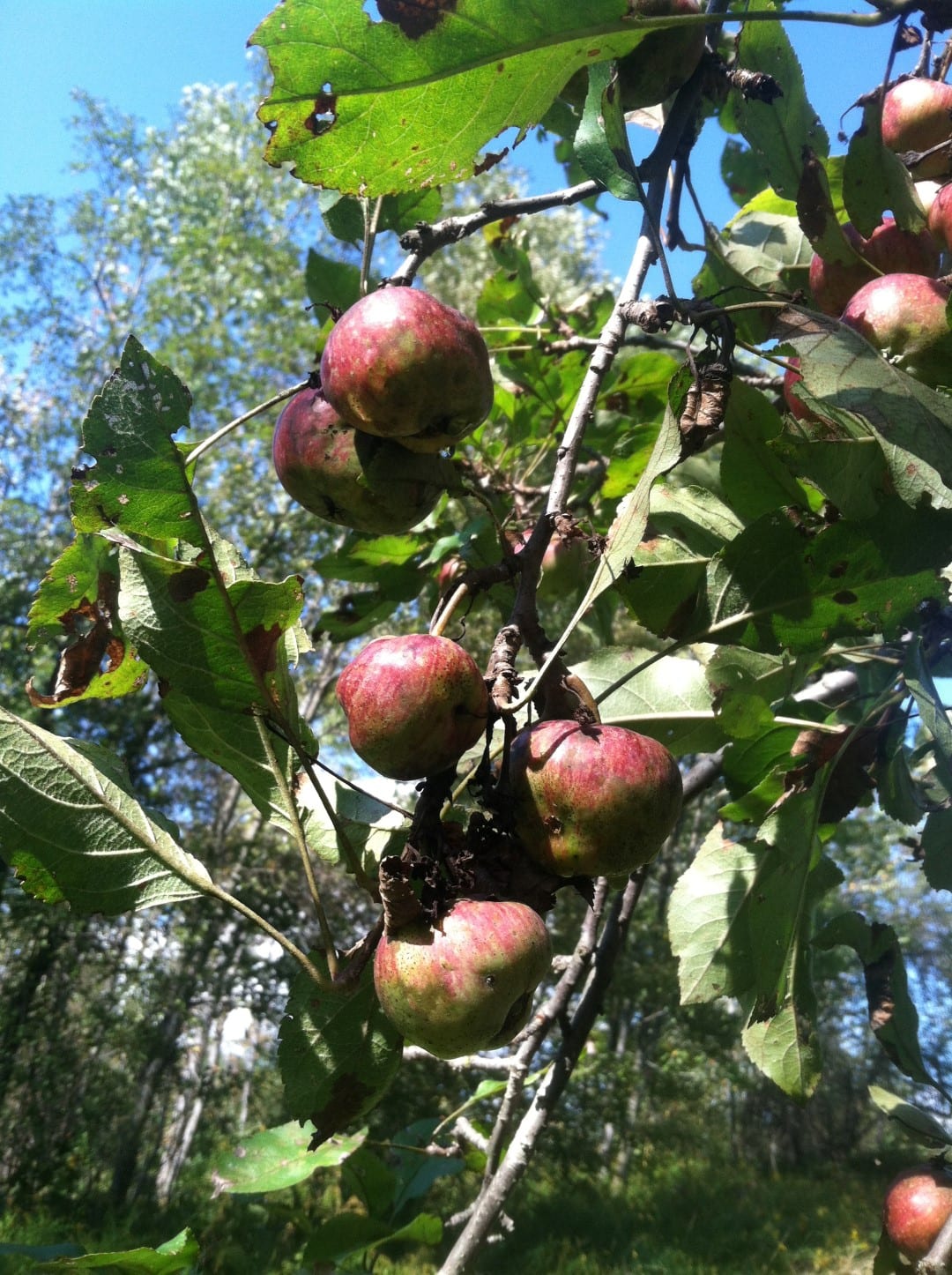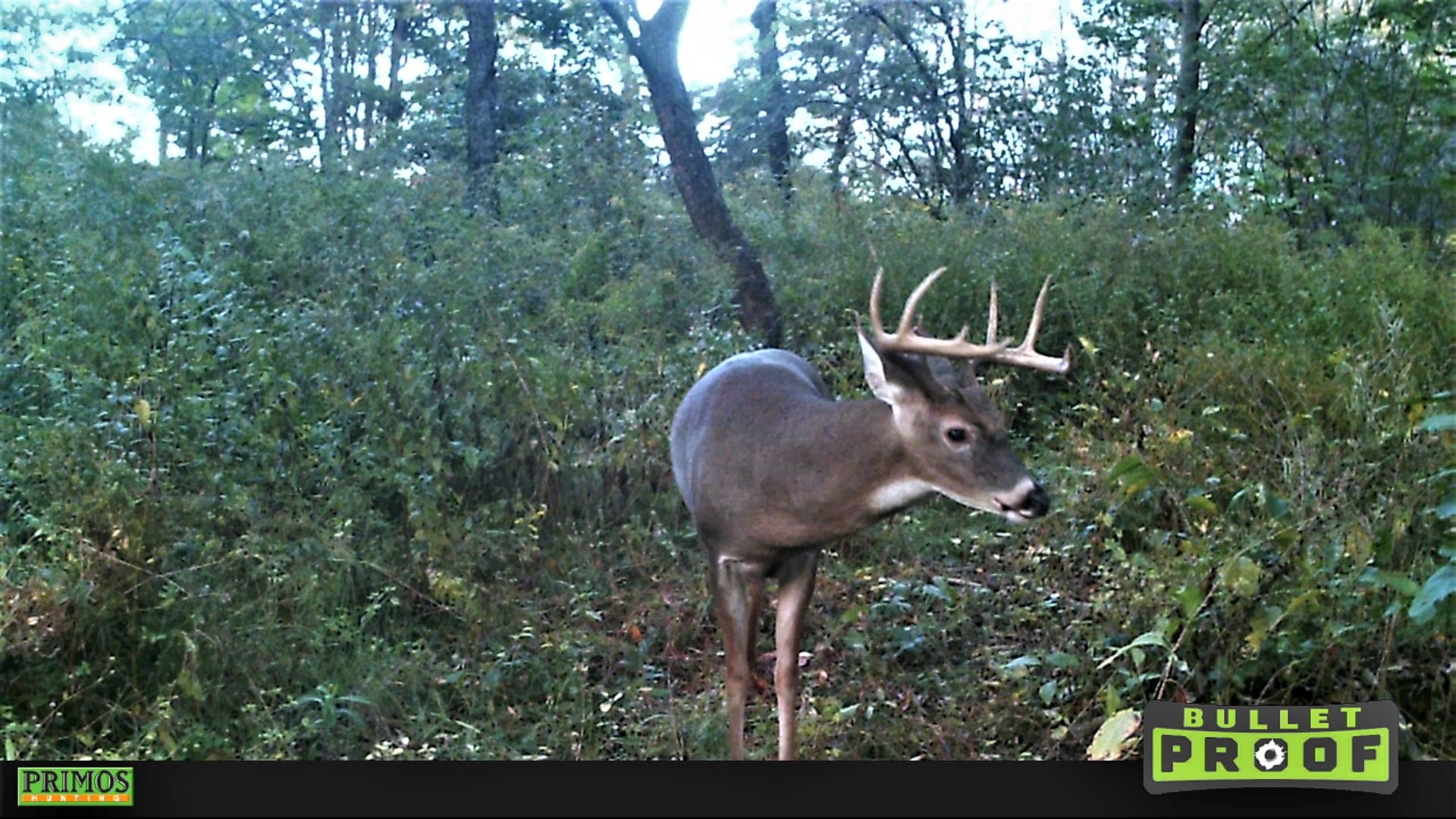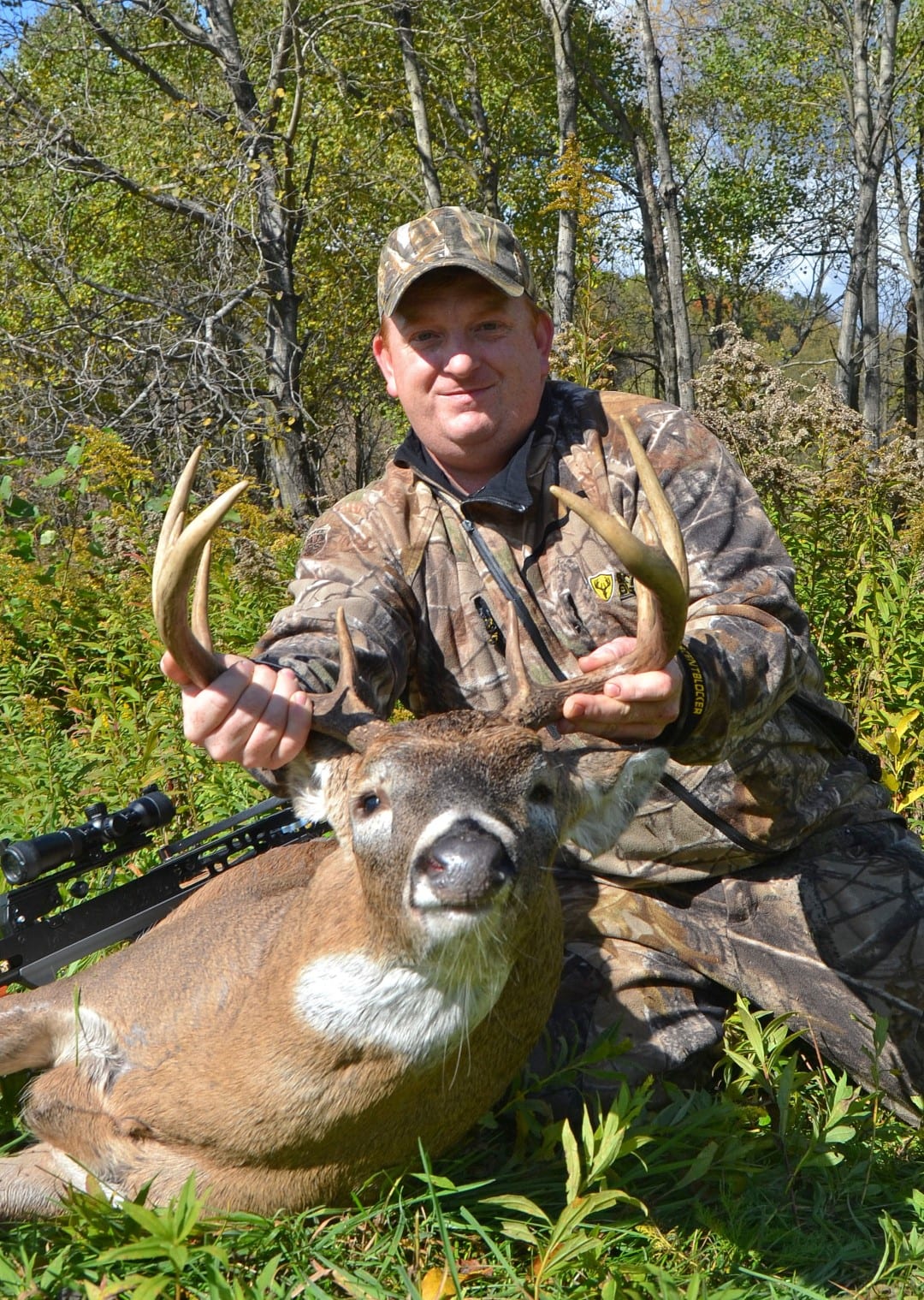LAST UPDATED: March 25th, 2019
Two weeks before archery season, I placed two cameras at an apple tree on the property where I hunt. The branches were bent to the max under the weight of so much fruit. Deer enjoyed the bounty as well and had the ground under the tree beaten bare. Any apple that hit the ground didn’t last long, and I quickly discovered that one of the most frequent visitors to that tree was a dandy 10-point.

Apple trees full of fruit in bow season are hard to beat for drawing deer.
Hunting near apple trees is a special treat for me. Over the years, I’ve only had the opportunity a handful of times. It seems the stars have to align in order for it to work out in my favor, primarily because so many species of apples exist and they all ripen at different times or, in some cases, different years. The apple tree on this property, for instance, are the type that only bears fruit every other year. Also, the fruit ripens in early September, which means that few apples are left by opening day of archery – and sometimes they’re gone long before then, especially during drought years.
If you don’t know which species of apples grow on your property, a field guide can come in handy. Or, if you’re technologically-inclined, there’s a really neat website, www.applename.com, that helps you identify the variety based on a series of questions about characteristics of everything from tree bark to stem length to skin color and texture of the fruit.
Do you really need to know the species of apple tree in order to hunt there? Probably not. Most scouting is done close enough to the time of hunting that it shouldn’t matter much at all. However, if you’re planning to plant apple trees on your property, then it’s handy information to have, especially if you hope to hunt by those trees in the future. Some species ripen as early as July (Yellow Transparent, Pristine), while others don’t ripen until November (Pink Lady, Goldrush, Granny Smith). If you plan it right, you can plant enough variety on your property so that you can hunt near fresh apples all season long. Considering that a single tree can produce up to 250 pounds of fruit every year, apple trees are a heck of a deal for both hunters and wildlife.
Communication Hub
Anywhere deer gather for any length of time can become a communication hub, and apple trees certainly have that potential. In late summer and early fall, under the low-hanging branches of apple trees are great places to find scrapes. Even later in the year, after all the apples are gone, bucks will still visit these scrapes in search of estrous does.
When deer use those scrapes, as well as hot that location becomes, depends on the location of the tree itself. Apple trees situated in areas where deer are already traveling are prime spots. Out of the way trees are usually visited less often.
The best apple trees of all are located in natural funnels with some sort of cover nearby. Trees found on the edge of fields or in the wide open tend to get more nocturnal visits, which makes them less than ideal for hunting. But if you can find a producing tree with a fair amount of cover around – especially if the tree borders a bedding area – you have found a little piece of whitetail hunter’s heaven.
Hunting Strategies
Some hunters don’t like hunting by apple trees because deer have a tendency to visit them mostly at night. It’s a hard point to argue, and the two trail cameras I hung by the apple tree where I hunt definitely produced more nighttime images than daytime shots. In fact, leading up to opening day, I didn’t have a single daytime photo of the 10-point. That quickly changed with the weather, though.
At the end of the first week of archery, a storm front blew through and got deer moving earlier than usual. Unfortunately, it was on a Sunday, which is closed to deer hunting here in Pennsylvania. But when I checked the trail cameras Monday morning, sure enough, I had daytime photos of the buck at the tree early Sunday evening.

The author made his move at the apple tree when his buck finally showed up on camera in daylight hours.
Hopes renewed, I hunted the next three days. Nothing. All my pics of the deer were at night again, but on Thursday of that week, another storm moved through. Bingo! Minutes before the end of legal shooting time, the 10-point came sneaking up the funnel to steal some of that low-hanging fruit. This time, I was there waiting for him.
I’ve found that patience is key when hunting directly on top of food sources such as apple trees – and food plots, for that matter. Mature deer, especially, are just naturally more cautious and will often wait until they’re sure the coast is clear before moving in for a meal. You have to wait it out with them. Keep an eye on the weather, and if a cold or storm front are in the forecast, make sure you’re in the stand.
Another strategy, of course, is to backtrack the deer’s travel route and hang a stand as close to his bedding area as possible without spooking him. I only do this if I’m 100% sure I’m not going to push the deer out of its bed on my way to and from the stand. All it takes is bumping a buck once or twice to knock it off its pattern, and possibly even out of the area.

The author with his 10-pointer taken at the apple trees.
Planting A Hot Spot
Planting apple trees is one of the easiest habitat improvements you can make to your property. If you hope to someday hunt by the trees, they should be planted where the deer are already traveling. In other words, find the best hunting location first. Factor in everything from potential bedding areas and travel routes to wind direction and where you’ll actually hang your treestand, and then improve the area with a couple of apple trees.
Although fruit trees can be planted during any point of the growing season, fall is a great time to do it. Cooler temperatures are less stressful on the trees and you don’t have to worry about watering as much because rainfall is naturally more in the fall than summer. Fall planting allows the tree’s roots enough time to adjust to the new soil and promotes faster growth the following spring.
Planting apple trees is a very simple process. Dig a hole about two or three times the diameter of the container your tree came in and about twice as deep. Line the bottom of the hole with a mixture of dirt and compost, enough so that the tree’s root ball sits slightly higher than the top rim of the hole. Water the root ball with a couple gallons of water and then fill in the rest of the hole with more compost and soil. A two or three-inch layer of mulch can then be added to help retain moisture and protect the root ball from winter. Also, you may want to stake the tree, particularly in areas that receive heavy winter winds, as well as place a small mesh fence around it to prevent deer from chewing off buds before they can mature.
Finally, sit back and watch it grow. Some species of dwarf and semi-dwarf trees begin producing viable fruit within four to six years and can grow as high as twenty feet tall. Depending on where you live and the length of the growing season, it won’t be long until you’re hunting near your very own apple trees.

 By
By 



